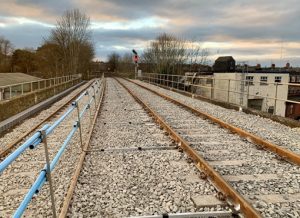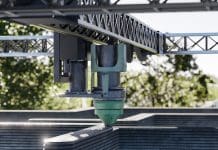Graham has completed part of a railway bridge replacement and refurbishment works programme, incorporating a 72-hour single event possession, on the Ballymena to Coleraine rail line
 Three major sites, namely the Braid Bridge, Coolderry Bridge and the Culbreen Bridge, were all part of the Translink commissioned contract that was awarded in late January 2021.
Three major sites, namely the Braid Bridge, Coolderry Bridge and the Culbreen Bridge, were all part of the Translink commissioned contract that was awarded in late January 2021.
Before construction work could commence, a two-month planning process was required, which resulted in the identification of a more efficient 72-hour single possession solution as opposed to an original two-pronged possession plan totalling 108 hours.
This innovative approach considerably reduced disruption to the rail network by a full day and a half (36 hours) and also allowed the Graham team to de-risk the programme for two of the bridges.
The existing Culbreen Bridge structure was demolished, meaning costly ongoing maintenance is no longer required.
The underside of the entire deck and outer edges of the Coolderry Bridge underwent hydro-demolition before the existing steelwork was drilled for reinforcement to be laid and the surface shot-creted.
These important bridge strengthening works, conducted for the first time during a disruptive rail possession, have restored the bridge’s weight restriction to its original design of 40 tonnes.
The Braid Bridge works, on a four-arch masonry structure over the River Braid in Ballymena, involved the removal of 70m of twin track, sleepers, ballast and structural fill.
Subsequently, the bridge was waterproofed and reinstated, extending the life span of the structure. The track was also re-laid, welded and stressed.
Advanced planning and programming
Andrew Henry, Graham contracts manager, said: “Generally, a multi-site scheme of this complexity would require a prolonged period of advanced planning and programming, sometimes as much as nine months.
“Demonstrating our technical competency, we were able to develop a more effective solution of a 72-hour single event possession in as little as two months.
“This ensured a more efficient process and reduced disruption to the network. Significantly, our waterproofing work, involving loose laid sheeting, was the first of its type to be carried out on a ‘live’ Translink asset for a considerable length of time.
“Overall, our planning and delivery reflect the successful long-term collaborative relationship that we have developed with Translink, and we look forward to working in partnership on further schemes to future-proof the local rail network.”













